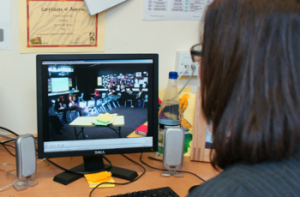Backward planning: The way forward
Planning professional learning without first clearly deciding the effect you want it to have is like choosing the route for a journey before deciding on the destination. Of course, the route is important, but there’s little point in setting off before you know where it is you want to go.

Clarifying the goals you want your professional learning to achieve means you can then judge the value, worth and appropriateness of the activities and resources you use. As Guskey writes in his article ‘Planning Professional Learning’: ‘Our success in the end will depend on how we begin.’
5 things to consider when planning professional learning
Guskey suggests five crucial things you should consider when planning what activities you’re going to use for your professional learning. Guskey’s method is to plan backwards. So, your first step should be deciding where you want to end up:
1. Clarify your desired student learning outcomes
Planning professional learning activities needs to start with discussions of intended effects on student learning. Make sure you have clear goals about the effect you want your professional learning to ultimately have on your students’ learning.
2. Decide which new practices will be implemented
Choose which instructional practices and policies are most likely to produce your desired student learning outcomes. Make sure you research the methods you choose to adopt to check that reliable evidence validates your chosen approach.

3. Establish support
Guskey claims that many valuable improvement efforts fail miserably due to a lack of active participation and clear support from school leaders. Equally, even the best professional learning experiences will be ineffective if teachers don’t have the time, funding or necessary resources. So, ensure that you have access to all of these, as well as full support from your school’s leadership.
4. Build knowledge and skill
Developing sufficient in-depth knowledge of the new practices you plan to use will make it easier for you to implement them in your professional learning.
5. Decide how you will implement new practices
Once you have established these first four steps, you can choose which professional learning activities you will use to help you adopt these new practices. You may want to self-reflect on your teaching, or maybe try peer coaching with colleagues - perhaps using video. Which activities you choose is up to you, and it will be easier to decide on those that will be the most useful now that you have a clear idea of the impact you want your professional learning to have for your students.
The end depends upon the beginning
When planning your professional learning, every decision you make has a profound effect on the next. For instance, the student learning outcomes you want to see will directly influence the kinds of practices and policies you will need to adopt.
As Guskey says, it is only through high quality professional learning that any improvements in education will be made. Consequently, it is important that all professional learning is carefully considered and properly planned. So, decide what you want the improvements to be before you even think about how to get there.
Do you agree with Guskey’s encouragement of backward planning? How do you plan your professional learning?


Leave a comment:
Get blog notifications
Keep up to date with our latest professional learning blogs.